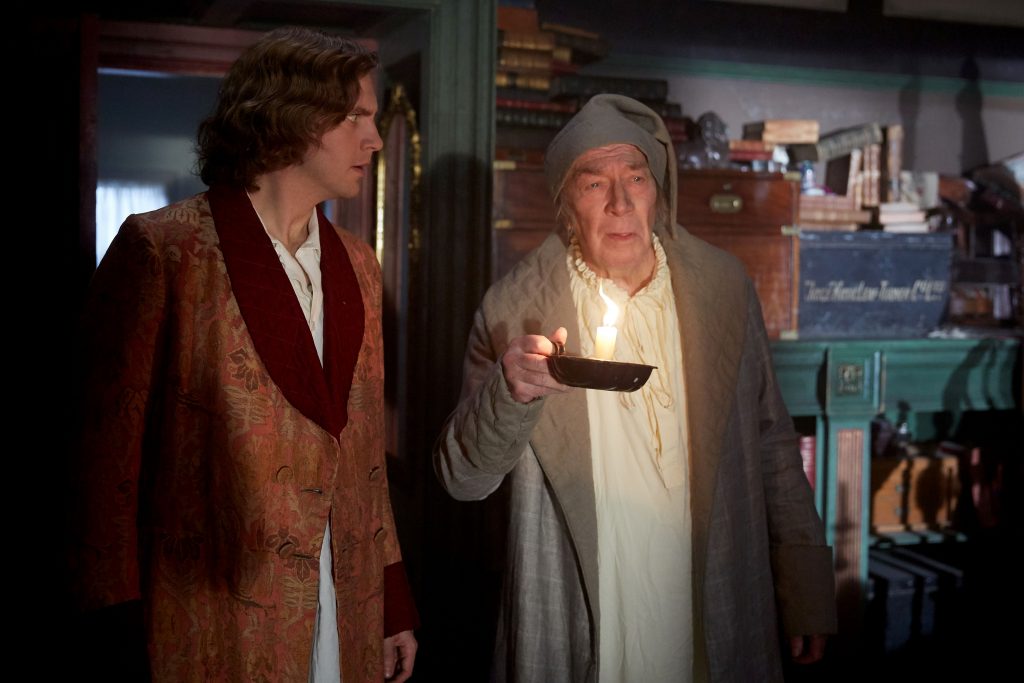While Jesus’ birth has been celebrated by Catholics and other Christians for well over 2,000 years, the secularized view of Christmas as a holiday that pretty much anyone can enjoy as a celebration of family and goodwill among mankind (as well as presents) exploded with the creation of the novel “A Christmas Carol” by Charles Dickens in the 1840s.
The new movie “The Man Who Invented Christmas” takes a wonderful and family-friendly approach to telling the tale of how British author Dickens conceived of the book after the failure of his serialized novel “Martin Chuzzlewit” had dampened the glow of his earlier literary successes, such as “Oliver Twist.” By giving viewers an engaging look into the brilliant creative mind of the world-famous author, the film achieves holiday classic status largely due to a star-making performance by Dan Stevens as Dickens.
The movie opens with Dickens on tour in America in 1842, but living in fear of the fact that “Chuzzlewit” is a relative failure compared to his previous hits. He’s also drowning in debt due to the costs of both his tour and his outrageous lifestyle, in which he’s dealing with a wife, a houseful of kids and servants, and is concerned he’s headed for debtors’ prison.
Amid this tension, Dickens hears his children laughing and crying over a ghost story being told by the family’s new, young Irish maid. This story, combined with his difficulties securing an advance for a new book or a loan, inspire him to start writing “A Christmas Carol.” As he writes the book, the characters he writes about come alive and speak back to him, especially old Ebenezer Scrooge, who’s anxious to tell Dickens “my side of the story.”
However, no one will give Dickens an advance for the book, despite help from his longtime friend and manager, John Forster. No one cares about Christmas these days, the publishers say. So, Dickens decides to finance the book himself, but the decision puts additional pressure on him to finish the book in time for Christmas.
Meanwhile, Dickens’ irresponsible father shows up on his doorstep with his mother. This only reminds Dickens of the time he was forced to work in a filthy, rat-infested factory among other child workers because his parents and younger siblings were sent to a debtors’ prison to work off the father’s debts. The father brings along a pet crow for their grandchildren, which only increases the distractions in the house while Dickens tries to write “Carol.”
The movie solves the problem of how to avoid the potentially drab creative process by having Dickens interact with the characters in his book. Not only does he have lively discussions with them, they also act as a kind of Greek chorus, commenting on Dickens’ own personal story.
For example, Scrooge reminds Dickens that his attitude toward his father is just as miserly as Scrooge’s own attitude toward accumulating wealth. By employing these inventive techniques, the film recreates some of the novel’s most stirring moments.
In the movie, Dickens overcomes the ordeal of writing his book and dealing with his father by remembering something his father taught him: that anyone can lift the burden of another person. Both the novel and the film are classic stories of redemption, and thus can’t be recommended more highly for all ages.
“The Man Who Invented Christmas” is full of laughter, tears and brilliance. Dan Stevens gives a terrifically charismatic performance as Charles Dickens. The great Christopher Plummer (“The Sound of Music” and an Oscar-winning turn in “Beginners”) delivers a boisterous performance as the curmudgeonly Mr. Scrooge.
Like the book on which it’s based, “The Man Who Invented Christmas” (which is rated PG) is a celebration of Christmas and the biblical sentiment of the birth of Christ — “Peace on Earth, goodwill toward men.” It’s a perfect holiday movie for Thanksgiving and the Christmas season.

